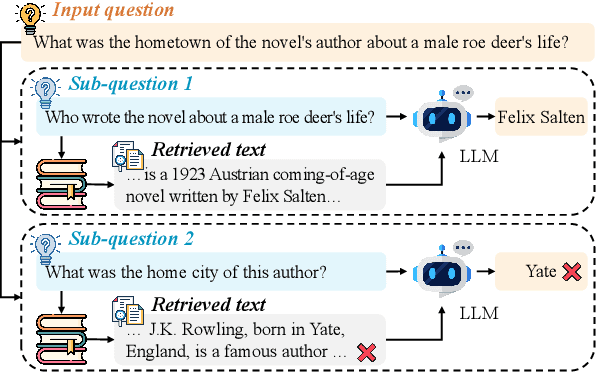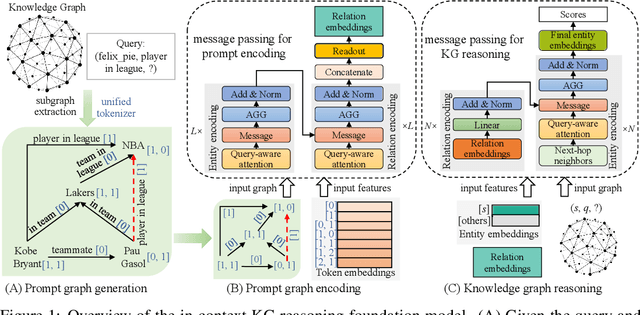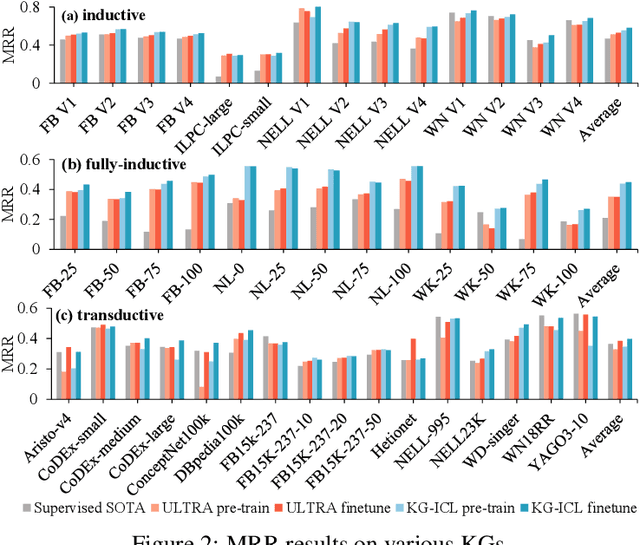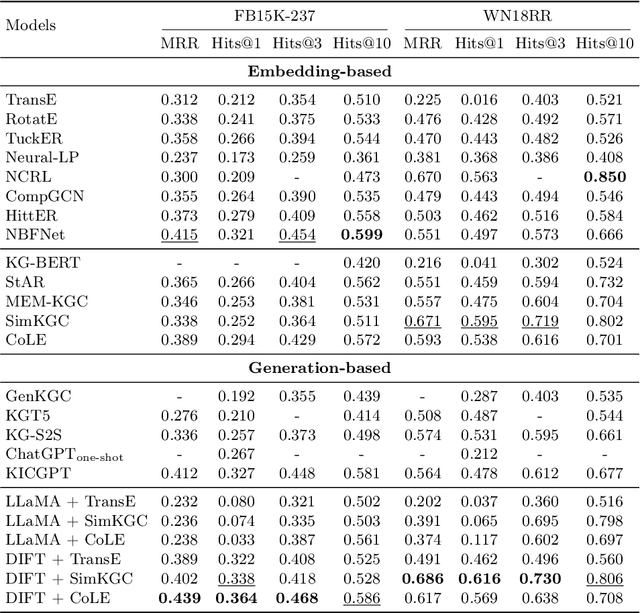Zequn Sun
Answering the Unanswerable Is to Err Knowingly: Analyzing and Mitigating Abstention Failures in Large Reasoning Models
Aug 26, 2025Abstract:Large reasoning models (LRMs) have shown remarkable progress on complex reasoning tasks. However, some questions posed to LRMs are inherently unanswerable, such as math problems lacking sufficient conditions. We find that LRMs continually fail to provide appropriate abstentions when confronted with these unanswerable questions. In this paper, we systematically analyze, investigate, and resolve this issue for trustworthy AI. We first conduct a detailed analysis of the distinct response behaviors of LRMs when facing unanswerable questions. Then, we show that LRMs possess sufficient cognitive capabilities to recognize the flaws in these questions. However, they fail to exhibit appropriate abstention behavior, revealing a misalignment between their internal cognition and external response. Finally, to resolve this issue, we propose a lightweight, two-stage method that combines cognitive monitoring with inference-time intervention. Experimental results demonstrate that our method significantly improves the abstention rate while maintaining the overall reasoning performance.
When Can Large Reasoning Models Save Thinking? Mechanistic Analysis of Behavioral Divergence in Reasoning
May 21, 2025Abstract:Large reasoning models (LRMs) have significantly advanced performance on complex tasks, yet their tendency to overthink introduces inefficiencies. This study investigates the internal mechanisms of reinforcement learning (RL)-trained LRMs when prompted to save thinking, revealing three distinct thinking modes: no thinking (NT), explicit thinking (ET), and implicit thinking (IT). Through comprehensive analysis of confidence in thinking termination, attention from thinking to generation, and attentional focus on input sections, we uncover key factors influencing the reasoning behaviors. We further find that NT reduces output length at the cost of accuracy, while ET and IT maintain accuracy with reduced response length. Our findings expose fundamental inconsistencies in RL-optimized LRMs, necessitating adaptive improvements for reliable efficiency.
Mitigating Lost-in-Retrieval Problems in Retrieval Augmented Multi-Hop Question Answering
Feb 20, 2025



Abstract:In this paper, we identify a critical problem, "lost-in-retrieval", in retrieval-augmented multi-hop question answering (QA): the key entities are missed in LLMs' sub-question decomposition. "Lost-in-retrieval" significantly degrades the retrieval performance, which disrupts the reasoning chain and leads to the incorrect answers. To resolve this problem, we propose a progressive retrieval and rewriting method, namely ChainRAG, which sequentially handles each sub-question by completing missing key entities and retrieving relevant sentences from a sentence graph for answer generation. Each step in our retrieval and rewriting process builds upon the previous one, creating a seamless chain that leads to accurate retrieval and answers. Finally, all retrieved sentences and sub-question answers are integrated to generate a comprehensive answer to the original question. We evaluate ChainRAG on three multi-hop QA datasets$\unicode{x2013}$MuSiQue, 2Wiki, and HotpotQA$\unicode{x2013}$using three large language models: GPT4o-mini, Qwen2.5-72B, and GLM-4-Plus. Empirical results demonstrate that ChainRAG consistently outperforms baselines in both effectiveness and efficiency.
A Prompt-Based Knowledge Graph Foundation Model for Universal In-Context Reasoning
Oct 16, 2024



Abstract:Extensive knowledge graphs (KGs) have been constructed to facilitate knowledge-driven tasks across various scenarios. However, existing work usually develops separate reasoning models for different KGs, lacking the ability to generalize and transfer knowledge across diverse KGs and reasoning settings. In this paper, we propose a prompt-based KG foundation model via in-context learning, namely KG-ICL, to achieve a universal reasoning ability. Specifically, we introduce a prompt graph centered with a query-related example fact as context to understand the query relation. To encode prompt graphs with the generalization ability to unseen entities and relations in queries, we first propose a unified tokenizer that maps entities and relations in prompt graphs to predefined tokens. Then, we propose two message passing neural networks to perform prompt encoding and KG reasoning, respectively. We conduct evaluation on 43 different KGs in both transductive and inductive settings. Results indicate that the proposed KG-ICL outperforms baselines on most datasets, showcasing its outstanding generalization and universal reasoning capabilities. The source code is accessible on GitHub: https://github.com/nju-websoft/KG-ICL.
Finetuning Generative Large Language Models with Discrimination Instructions for Knowledge Graph Completion
Jul 23, 2024



Abstract:Traditional knowledge graph (KG) completion models learn embeddings to predict missing facts. Recent works attempt to complete KGs in a text-generation manner with large language models (LLMs). However, they need to ground the output of LLMs to KG entities, which inevitably brings errors. In this paper, we present a finetuning framework, DIFT, aiming to unleash the KG completion ability of LLMs and avoid grounding errors. Given an incomplete fact, DIFT employs a lightweight model to obtain candidate entities and finetunes an LLM with discrimination instructions to select the correct one from the given candidates. To improve performance while reducing instruction data, DIFT uses a truncated sampling method to select useful facts for finetuning and injects KG embeddings into the LLM. Extensive experiments on benchmark datasets demonstrate the effectiveness of our proposed framework.
KnowLA: Enhancing Parameter-efficient Finetuning with Knowledgeable Adaptation
Mar 22, 2024Abstract:Parameter-efficient finetuning (PEFT) is a key technique for adapting large language models (LLMs) to downstream tasks. In this paper, we study leveraging knowledge graph embeddings to improve the effectiveness of PEFT. We propose a knowledgeable adaptation method called KnowLA. It inserts an adaptation layer into an LLM to integrate the embeddings of entities appearing in the input text. The adaptation layer is trained in combination with LoRA on instruction data. Experiments on six benchmarks with two popular LLMs and three knowledge graphs demonstrate the effectiveness and robustness of KnowLA. We show that \modelname can help activate the relevant parameterized knowledge in an LLM to answer a question without changing its parameters or input prompts.
Generating Explanations to Understand and Repair Embedding-based Entity Alignment
Dec 19, 2023Abstract:Entity alignment (EA) seeks identical entities in different knowledge graphs, which is a long-standing task in the database research. Recent work leverages deep learning to embed entities in vector space and align them via nearest neighbor search. Although embedding-based EA has gained marked success in recent years, it lacks explanations for alignment decisions. In this paper, we present the first framework that can generate explanations for understanding and repairing embedding-based EA results. Given an EA pair produced by an embedding model, we first compare its neighbor entities and relations to build a matching subgraph as a local explanation. We then construct an alignment dependency graph to understand the pair from an abstract perspective. Finally, we repair the pair by resolving three types of alignment conflicts based on dependency graphs. Experiments on a variety of EA datasets demonstrate the effectiveness, generalization, and robustness of our framework in explaining and repairing embedding-based EA results.
Joint Pre-training and Local Re-training: Transferable Representation Learning on Multi-source Knowledge Graphs
Jun 05, 2023



Abstract:In this paper, we present the ``joint pre-training and local re-training'' framework for learning and applying multi-source knowledge graph (KG) embeddings. We are motivated by the fact that different KGs contain complementary information to improve KG embeddings and downstream tasks. We pre-train a large teacher KG embedding model over linked multi-source KGs and distill knowledge to train a student model for a task-specific KG. To enable knowledge transfer across different KGs, we use entity alignment to build a linked subgraph for connecting the pre-trained KGs and the target KG. The linked subgraph is re-trained for three-level knowledge distillation from the teacher to the student, i.e., feature knowledge distillation, network knowledge distillation, and prediction knowledge distillation, to generate more expressive embeddings. The teacher model can be reused for different target KGs and tasks without having to train from scratch. We conduct extensive experiments to demonstrate the effectiveness and efficiency of our framework.
What Makes Entities Similar? A Similarity Flooding Perspective for Multi-sourced Knowledge Graph Embeddings
Jun 05, 2023Abstract:Joint representation learning over multi-sourced knowledge graphs (KGs) yields transferable and expressive embeddings that improve downstream tasks. Entity alignment (EA) is a critical step in this process. Despite recent considerable research progress in embedding-based EA, how it works remains to be explored. In this paper, we provide a similarity flooding perspective to explain existing translation-based and aggregation-based EA models. We prove that the embedding learning process of these models actually seeks a fixpoint of pairwise similarities between entities. We also provide experimental evidence to support our theoretical analysis. We propose two simple but effective methods inspired by the fixpoint computation in similarity flooding, and demonstrate their effectiveness on benchmark datasets. Our work bridges the gap between recent embedding-based models and the conventional similarity flooding algorithm. It would improve our understanding of and increase our faith in embedding-based EA.
Newton-Cotes Graph Neural Networks: On the Time Evolution of Dynamic Systems
May 24, 2023Abstract:Reasoning system dynamics is one of the most important analytical approaches for many scientific studies. With the initial state of a system as input, the recent graph neural networks (GNNs)-based methods are capable of predicting the future state distant in time with high accuracy. Although these methods have diverse designs in modeling the coordinates and interacting forces of the system, we show that they actually share a common paradigm that learns the integration of the velocity over the interval between the initial and terminal coordinates. However, their integrand is constant w.r.t. time. Inspired by this observation, we propose a new approach to predict the integration based on several velocity estimations with Newton-Cotes formulas and prove its effectiveness theoretically. Extensive experiments on several benchmarks empirically demonstrate consistent and significant improvement compared with the state-of-the-art methods.
 Add to Chrome
Add to Chrome Add to Firefox
Add to Firefox Add to Edge
Add to Edge